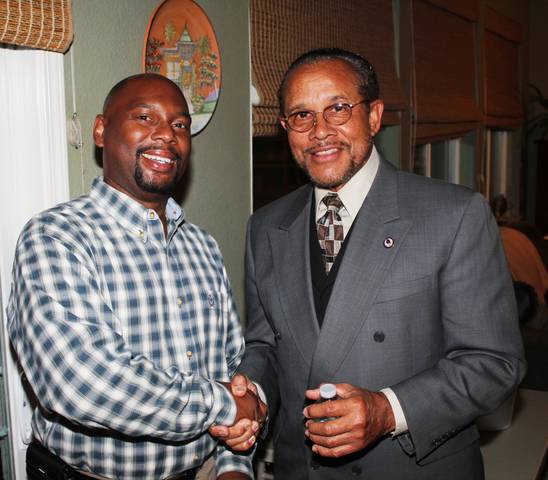Sadly, numerous nonprofits have absolutely no system of evaluating directors, except for the occasional absenteeism policy hidden within its bylaws or a proposal at a regular meeting to terminate a dissonant director. Engaging in ongoing self-evaluations is critical for measuring the overall effectiveness of both the organization and its directors. Operationally, it's no different than being evaluated on the job, except many nonprofits lack standardization of training, forms, and processes.
For example, it starts with an initial interview, orientation, and offer to become a director. Accordingly, the person is recommended to the board, accepted, and begins tenure. Each director receives a handbook, job description, list of colleagues, and schedule of regular meetings. Contained within this handbook is the history of the nonprofit, lists of programs and services, periodic evaluations, and a process for exit interviews once a board member leaves.
Some agencies now use a 360-degree method of evaluation. They try to include all key stakeholders - staff, customers, etc. - in the overall process. Although inclusion is useful, it may be less efficient and expose glitches in the fabric of the agency if built on shaky ground. Clearly, this can lead to negative press and hostility in and outside of the boardroom. Thus, internal board evaluations must be perfected and agreed on before including public scrutiny. Regardless of choice, some formal method of evaluating directors is vital to overall organizational health and success.
When Do I know It's Time to Leave?
Succession planning is crucial. Board chairs, presidents, executive committees, and community stakeholders alike should be actively engaged is this process. Arguably, each should have their say, not necessarily their way in this process. Generally, becoming a director is not analogous to being appointed to the Supreme Court; it's not a lifetime gig, nor should it be.
Consider this: most Fortune 500 « companies visit top colleges and universities annually to recruit new employees. Ever wonder why? It's because they are keenly aware that self-investments eventually yield benefits company wide, including a larger market share, fertile ideas, intellectual growth, and, yes, profit. Nonprofit boards essentially compete for talent in a global marketplace which includes for-profit enterprises. Hence, the infusion of new talent can be contagious for an organization akin to banks and blood in our bodies - when it stops moving, you're dead.
Procedurally, applications, contracts, evaluations and, in some cases, sabbaticals, are all useful tools in determining when a director should go. Additionally, amending bylaws and terms of board service can offer valuable aids for boards attempting to evaluate, or remove under performing directors. Boards prefer having directors resign instead of firing them. This leaves less of a stigma over the organization. Some options to termination include:
- Voluntary resignations, rotating terms/limits, and "without cause" contracts
- Honoring selected seasoned directors at the annual meeting/dinner, then allowing them to voluntarily announce their future plans
- Assigning directors to chair periodic special board-directed projects to be evaluated by the full board
- Establishing a "board member emeritus" program that honors several years of service, yet eliminates his or her vote
- Actively soliciting sponsors to contribute perks, such as country club or golf memberships, to recognize superior service to the board and community
Here, the goal is twofold:
- To prepare directors for service and hold them accountable for their collective actions
- Creating ongoing board vacancies by announcing the appointment is not in perpetuity - simply put: "you are now free to restructure the body"
Conclusions with Recommendations
To summarize, below are seven "tune up" strategies for creating boards that work:
- Seek directors that are knowledgeable and busy - don't settle for neighbors, colleagues, or immediate family members.
- Establish firm expectations for new and seasoned directors - use interviews, orientations, covenants or contracts, evaluations, and exit strategies for obsolescent directors.
- Require directors to contribute to the organization with their time, expertise, and money. No matter how nominal, this ensures buy-in.
- Equip each director with a board manual that includes mission, history, programs, services, funding, expectations, and evaluation procedures.
- Create monetary and non-monetary perks for directors that are supported by donations from local merchants, businesses, and corporations.
- Engage, invest, and require directors to attend seminars, retreats, and training while serving, including, but not limited to: fiduciary/legal responsibilities, director roles, scope and level of service, marketing, and stakeholder expectations.
- Devise ongoing opportunities to "celebrate" directors.
Bottom line: boards are not constructed by magic, sorcery, or voodoo - they result in normal people choosing to take pensive responsibility for their collective "work."
Ronald Arrington, MBA, MPA, CTC is a practicing consultant, trainer, and coach. His unique triad (BLT) approach for ensuring organizational health is achieved by improving processes - namely boards, leaders, and pivotal management teams. For three decades, his clients have encompassed an array of public, private, education, and faith-based organizations. Comments and inquiries are welcome at: gotyactc@yahoo.com or
(Note: You can view every article as one long page if you sign up as an Advocate Member, or higher).





